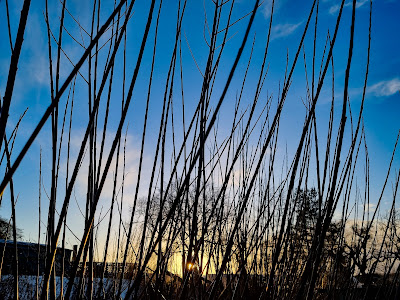and even the most experienced gardener can learn from the unrestrained beauty around them." -
Vincent A. Simeone
This plant is a family heirloom as I was given it from by a great Aunt. It was an off shoot of hers which she had had for many many years. I've had mine for nearly 30 years, she was in her 80's when she gave me my plant, so its getting on quite a bit and still growing well. It rarely gets potted up, maybe every few years when it gets very pot bound. These are the best heirlooms 
Clivia make striking plants for the house and conservatory. They are grown for their bold strap-shaped, dark-green leaves and trumpet-shaped red, yellow, orange or cream flowers which appear in groups on stout stems. These plants are evergreen with bulb-like bases and originate from low-altitude woodlands in South Africa.
Clivia are frost tender and can be damaged by temperatures below 5°C (40°F). They should be grown as a houseplant, in a conservatory or heated greenhouse and do best in bright, filtered or indirect light. Avoid direct sun in summer, which may scorch the leaves, and place pots away from radiators or other sources of heat.
I grow mine in a large pot on the floor of the greenhouse under the canopy of a massive yucca, a grape vine and kiwi fruit. It flowers every year with the bright orange flowers as you can see in the photo above. After flowering it produces bright red seed pods which I leave on for more colour interest.
 |
Cold one at work today, -6C warming to a balming -2C |
Some more chilly weather but it does make the gardens look pretty
 |
| Always worth leaving Calamagrostic through winter so they can glow in the late afternoon sun |
Celebrating a year of the Maisie monster in our lives
 |
| Lots of lovely late afternoon skies this week |
Throwback
Thursday – the wildlife garden. Following on from the native garden last week
and the willow fedge the week before we are still on the bottom terrace. Lets take
a walk through the development of the wildlife garden. Still on the bottom terrace
this garden is the second area you discover on your exploration of the nursery
gardens. Winding its way along, it is deceptive in that you don’t realise just
how narrow it is. A great way of showing how you can make a narrow garden feel
wider. The idea of the is garden is demonstrating plants you can put in your
garden to attract wild life. We have a bee border, a butterfly border, and bat
and bird border and a wildlife pond. These plants don’t have to be planted
together as I have but can be interplanted with other plants to encourage wild
life. You can read what plants I’ve used by following this link to our website.
The Willow fedge provides roosts for birds and we do get birds nesting in it
too. The wildlife pond is heaving with wildlife all year. It is home to newts,
frogs, toads, diving beetles, damsel flies and so much more. We used the no dig
methos for the first time in this garden, smothering the dense weeds with three
layers of cardboard then adding four inches of our own made compost on top. The
plants were planted into this, though the trees and shrubs were planted through
the cardboard into the soil beneath to give them the root depth they needed. A
layer of bark was then added for weed suppression and moisture retention. Three
years on this garden is really coming into its own and changes through the
season as the willow grows.
 |
| Great sky this afternoon and another section of willow finished |
Fading beauties - even in their last moments, glittering with frost they have a certain beauty
A busy weekend at the nursery running three willow fedge weaving workshops, great fun and great participants, lovely to spend time teaching and weaving willow with them all. I also got more weaving done and planning with David done when he was in on Sunday.
 |
| Caramel pudding anyone? |
Excellent lunch at Kailzie on Monday in the Courtyard cafe. Food was great as was the service, we will definitely be back 
#rural #countrylife #countryliving #cottagelife #antiquecottagescenes #interiors #scottishborders #independantretailer #smallbusiness #localbusiness #independantplantnursery #uniqueplantnursery #hardyscottishplants #scottishgarden #gardeningontheedge #scottishborders
If you to see what's new and looking good at the nursery like our Facebook
Find out more about the nursery here - our web site: www.quercusgardenplants.co.uk
Follow us on Instagram @quirkybirdgardener and Quercus Garden Plants

.jpg)

.jpg)








.jpg)

.jpg)












The garden under winter frost does look very beautiful. Impressed how narrow the wildlife garden is on the winter photo, it looks like a different place altogether in the summer!
ReplyDeleteHi Saila, the bottom terrace changes completely through the year as the willow fedge grows. Its a great way of showing what you can do with a narrow garden :)
Delete